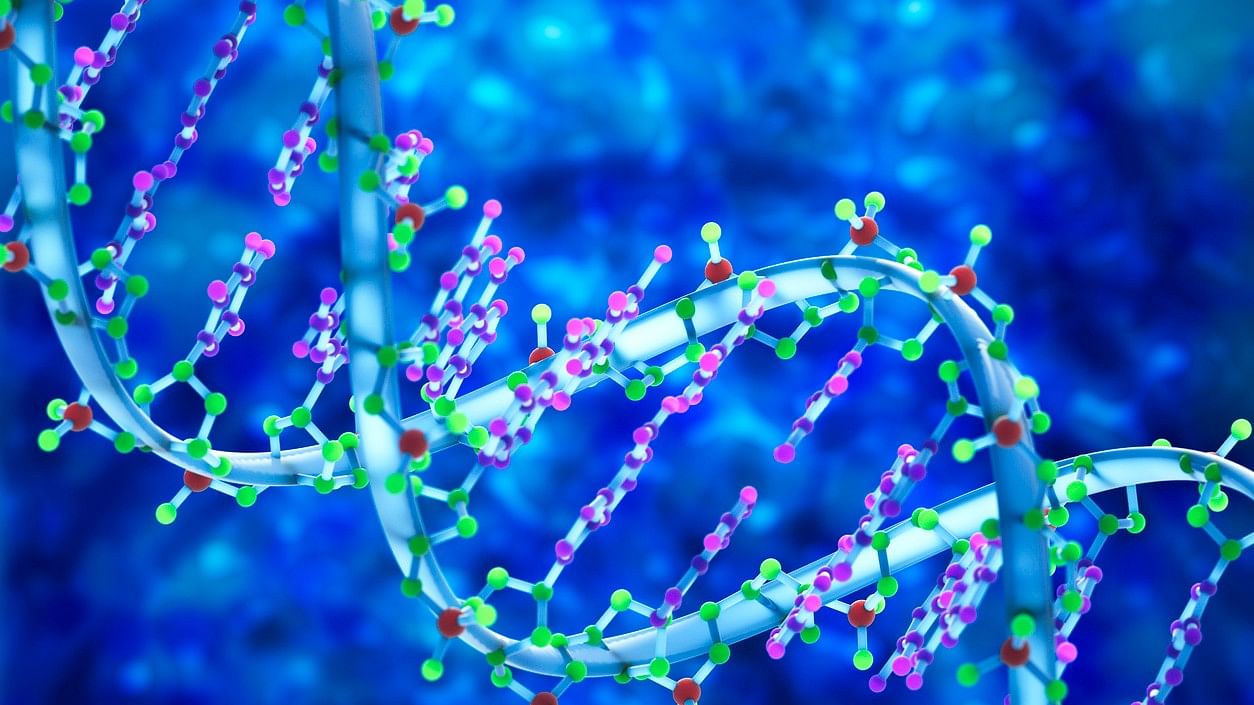
Representative image of DNA
Credit: iStock Photo
Hyderabad: A high throughput genetic study by a team of researchers from Hyderabad based Centre for Cellular and Molecular Biology (CCMB) found that Bunts and Hoysalas from Karnataka, Nairs, Thiyyas and Ezhavas from Kerala, are genetically closer to populations of northwest India.
The researchers looked for genome-wide autosomal markers and maternally inherited mitochondrial DNA markers, and compared their results with ancient and contemporary Eurasian populations ranging from the Bronze age to present day groups.
The findings of the genetic study that was published recently in the journal Genome Biology and Evolution recently has also revealed that the Nair and Thiyya warrior communities share most of their ancestry from ancient migrants of North-west India, and have enhanced Iranian ancestry, similar to Kamboj and Gujjar populations.
“Their maternal genome reflects higher distribution of West Eurasian mitochondrial lineages, suggesting female-mediated migration, unlike most of the recent migrant groups such as Siddis,” said, a JC Bose fellow, Dr Kumaraswamy Thangaraj who led the study.
Dr Thangaraj observed that the south-west coast of India is one of the regions of high genetic and cultural diversity resulting from millennia of migration, settlements and admixture of human populations. Earlier studies on the recent migrants, who are inhabited in South-west India, including Jews, Parsis and Roman Catholics reveal the existence of rich genetic heritage of this region.
However, one major group of populations in this region with historical status of warriors or feudal lords have debatable genetic history. Historians and written records relate them to migrants from Ahichhatra (Iron age civilization) in Gangetic plain, while others relate them to Indo-Scythian clan migrants from North-West India.
“Our machine-learning based study suggests that the migration of these groups happened following North-west to Central Indian to the South-west coast during late Bronze age or probably Iron age ”, said first author of the study, Dr Lomous Kumar, who was the PhD student of CCMB and presently at the Birbal Sahni Institute of Palaeosciences, Lucknow.
CCMB director, Dr Vinay K Nandicoori, observed that this study also suggested the southwest coastal groups are remnants of very early migrations from northwest India following the Godavari basin to Karnataka and Kerala.